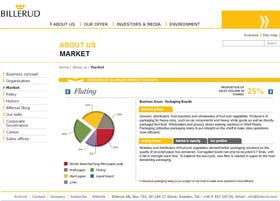Twitter mania is everywhere. Whether the quickly deafening crescendo heralds a change in the world’s communication paradigm, or the impending pop of the social networking bubble remains to be seen. What cannot be ignored is that businesses are embracing Twitter for the benefits they can gain from direct, real-time, two-way communication with consumers and business partners. It is only a matter of time before shareholders and company executives alike start asking, “Where is the company’s investor relations on Twitter?”
Twitter Is Different for IR
Jumping on the Twitter bandwagon and establishing a corporate presence is a simple task. The most difficult part of the whole process might be chasing someone off of the username that is the company’s registered trademark.
Otherwise, creating a Twitter account with a username, and typing in sub-140 character messages is a no-brainer. Bragging about company achievements, talking up new products, sending out links to coupons, or even just reminding the business’ followers about the company are par for the course when it comes to business Twitter usage.
Unfortunately, for the Investor Relations Department things are not so easy. There are legal pitfalls to Twitter for business use, as well as regulatory requirements for publicly traded companies on Twitter. Don’t forget, that the whole Twitter business is moot if the tweets the company sends out don’t add up to the kind of Twitter feed that people follow. Between the prospect of getting the company in legal trouble, developing a robust following, responding to shareholder concerns in a fast-moving forum, and just coming up with something to say in the company’s tweets, can tie the most technically savvy IR department in knots.
Fortunately, Twitter for Investor Relations can be broken down into an easily manageable process that provides tangible benefits for the corporation, the shareholders, and IR. This guide provides a step-by-step plan to get a business Twitter strategy running quickly. After all, quick communication is what Twitter is all about.
Rules and Strategy Guide to Twitter for Business Investor Relations
1) – Tweet Officially
a) Link to Official Twitter Account – Don’t make shareholders or analysts guess about your intentions. If you are going to use Twitter or other social networks to communicate with shareholders and others, make it official. Have a link directly from the Investor Relations landing page to the IR Twitter account along with a statement that this is the official Twitter account for corporate IR news. You don’t have to explicitly say it, but the implication is that anything else out there on Twitter, is rumor, innuendo, or speculation from non-official sources.
b) Have a Specific Twitter Account For Investor Relations – Do not use an umbrella corporate Twitter account. Do not share a Twitter username with any other department or purpose other than Investor Relations. Any lawyer with 5 minutes of experience knows that the quickest way to defeat legal protections is to show examples where these were violated, ignored, or otherwise misused or unused. In other words, your carefully crafted disclaimers, tweets, and links will all be for naught if the marketing guys throw up even a single tweet with hyperbole that proves not every precaution to ensure all information posted on Twitter is accurate. Use an IR only account and include IR or some other identifier in its name.
2) Create A Disclaimer Specifically for Twitter – The temptation to just use one of the standard disclaimers for Twitter is understandable. However, Twitter is unlike any other form of communication already engaged in, and it needs its own disclaimer. Do include as much of the standard boilerplate disclaimers as necessary, but also include Twitter specific information.
3) Post Twitter Disclaimers – Immediately next to your link to the official Twitter account, place a Twitter disclaimer. There will actually be two Twitter disclaimers required. The first is the short and sweet one that goes with the official link to the official Twitter account. The second is the one that is as long as the lawyers want it to be. The last sentence of the short one should be an “important note” that this is only the quick disclaimer and a link to the full disclaimer.
4) Create Twitter Terms of Use or Twitter Terms and Conditions – Disclaimers are one thing. Terms or Conditions of usage are another. Draw up Twitter specific terms to help protect the company against mistakes. Wal-mart created a stir with its laundry list of terms, which it has relabeled as “Twitter Discussion Guidelines.” The provide an excellent starting point for creating Twitter TOS.
5) Require Acceptance of the TOS or TOC – The software industry pioneered the concept of forcing consumers to agree to something without actually asking. CDs or Floppy Disks came in envelopes that said by opening the envelope you agreed to a whole list of terms and conditions. U.S. Courts have repeatedly upheld these “contracts” as valid. Do the same thing for your Twitter account. Use the “Bio” section to include a sentence which states that following or reading the posts on Twitter constitute acceptance of your terms of use.
6) Accept Limitations on These Safety Features – Disclaimers and Terms and Conditions can go a long way toward shutting the door on many avenues of liability. However, what stands up against a tort claim in court, and what stands up against the actions of a governmental regulatory agency such as the SEC, are two very different things. However, do not neglect these important safeguards. For every avenue of attack the company eliminates, the less chance there is for something to “stick.” – Following the rest of this IR Twitter guide will help provide more legal and regulatory protection.
With official Twitter accounts, disclaimers, and terms in place, the company’s investor relations department has done everything it can reasonably be expected to do in order to protect the company from unforeseen Twitter liability issues. Now, investor relations is ready to Tweet. What to tweet and how to keep what IR posts on Twitter from causing trouble is the next piece of Twitter strategy to get into place. Getting the corporate IR Twitter posting strategy right is next.




